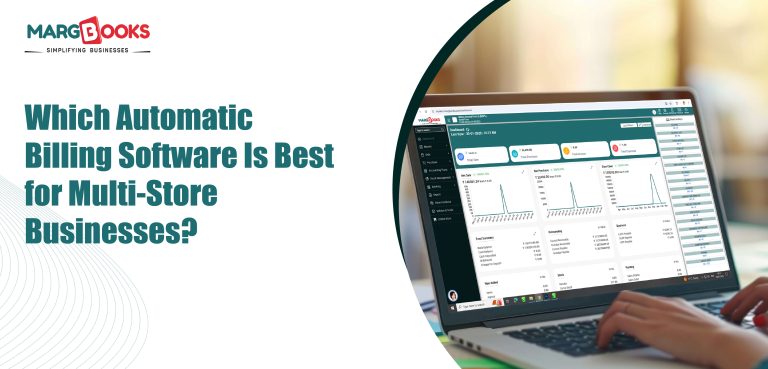Running multiple stores across different cities can be a headache, especially when it comes to billing. Every store owner I know struggles with keeping their billing consistent across branches. That’s where Automatic Billing Software comes in handy. Think about it – you’re sitting in your Delhi office, but you need to know what’s happening in your Pune branch right now. Manual billing just doesn’t cut it anymore when you’re trying to scale your business across multiple locations.
Why Multi-Store Owners Need Automatic Billing Software?
Let me tell you about my friend Rajesh, who owns three mobile phone stores in Ahmedabad. Before switching to automated billing, he was constantly traveling between stores to check sales reports and inventory. His staff would make billing mistakes, customers would complain about different pricing at different branches, and tax calculations were inconsistent.
Common Problems Without Automated Systems:
- Different pricing across stores creates customer confusion.
- Staff are making manual calculation errors during busy hours.
- No real-time visibility into which branch is performing well.
- Tax compliance headaches during GST filing.
- Inventory mismatches between actual stock and records.
- Time wasted on manual report generation.
What Makes Good Billing Software for Multiple Locations?
When you’re choosing software for multiple stores, you can’t just pick any random billing tool. I’ve seen too many business owners make this mistake and regret it later.
Must-Have Features:
- Cloud-based access – You should be able to check any store’s data from anywhere.
- Real-time synchronization – All branches should show updated inventory instantly.
- Centralized inventory management – Transfer stock between stores without confusion.
- Multi-user access with different permission levels for staff and managers.
- GST compliance that automatically calculates taxes for different states.
- Barcode scanning to reduce human errors during billing.
Real Examples from Indian Multi-Store Businesses
We know a clothing store owner in Jaipur who runs four branches across Rajasthan. She told me how MargBooks helped her standardize pricing and track which designs sell better in which locations. Now she can quickly transfer slow-moving inventory from one store to another based on real-time data with automatic billing software.
Similarly, there’s this medical wholesaler in Bengaluru who supplies to pharmacies across Karnataka. Before using automated billing, his staff would spend hours reconciling accounts between different branches. Now with MargBooks, everything syncs automatically, and he can focus on growing his distribution network instead of fixing billing errors.
Integration with Accounting Software
Your billing system shouldn’t work in isolation. Good accounting software integration means your sales data flows directly into your books without manual entry. This saves hours of work during month-end closures and reduces the chances of errors in your financial reports.
Cloud vs Desktop: What Works for Multi-Store Setup
Forget desktop software if you have multiple stores. We’ve seen business owners try to manage five stores with desktop-based systems, and it’s a nightmare. Take this electronics retailer in Pune, which uses MargBooks across its six stores. His store managers can process sales, check inventory, and generate reports from their tablets.
When he’s traveling, he can still monitor all stores from his smartphone. That’s the flexibility you need in today’s business environment with automatic billing software.
Why Cloud-Based Solutions Win:
- Access from any device with an internet connection.
- Automatic data backups – no risk of losing important data.
- Software updates happen automatically without IT headaches.
- Multiple users can work simultaneously without conflicts.
- Lower upfront costs compared to traditional server setups.
Cost Considerations for Multi-Store Billing
Pricing models vary significantly. Some companies charge per store, others charge based on the number of users or transactions. We’ve seen business owners with three stores pay more than those with ten stores just because they didn’t understand the pricing structure. You need online billing software that works from any device, anywhere.
A textile wholesaler in Chennai told me how MargBooks helped him save money by offering transparent per-store pricing without hidden charges. He knew exactly what he’d pay for each additional location, which helped him plan his expansion budget better.
Budget Planning Tips:
- Compare per-store vs per-user pricing models.
- Check if there are setup fees for each new location.
- Ask about volume discounts for multiple stores.
- Understand data storage limits and overage charges.
- Factor in training costs for staff across all locations.
Conclusion
Managing multiple stores doesn’t have to be overwhelming if you choose the right tools. From inventory synchronization to real-time reporting, the right Automatic Billing Software can transform how you operate your business across different locations.
Whether you’re running two stores or twenty, investing in proper billing automation will save you time, reduce errors with MargBooks. And this will help you make better business decisions based on actual data rather than guesswork.


